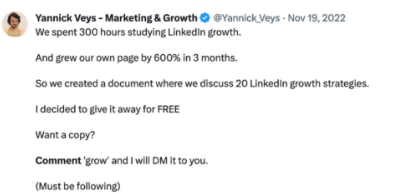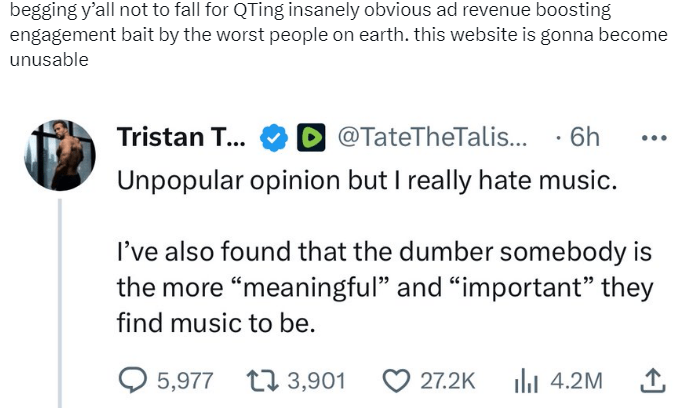On April 18, 2024, Elon Musk, businessman, investor, and Chief Technology Officer of X Corporation (formerly known as Twitter, Inc.), announced that accounts performing and participating in “engagement farming” will be “suspended and traced to the source.” As a user of X, I was unsure what actions “engagement farming” refers to.

When Musk announced he would purchase the bird app, formerly known as Twitter, and decided to rename it X, most longtime users were skeptical about the change of direction. Initially, the changes were small, like replacing the “tweet” button with a “post” button, but people were concerned when the company started laying off half of its workers. Eventually, a more troublesome event took place in October 2022. Musk revealed that the previous Twitter verification system would be terminated and replaced with a new one, allowing anyone on the site to purchase a blue check verification for a set monthly price, named Blue. Immediately after implementing the Blue subscription, X spiraled into a landscape of fake accounts posing as official agencies, public figures, and companies.

Two years in, and X has some new worsening problems. So, when Musk declared a battle against engagement farming, I was confused, as I was unfamiliar with the term, but I soon realized I was familiar with the action.
In this post, I plan to provide a comprehensive guide for X users on the concept of engagement farming on the platform and how it sometimes spreads misinformation.
What is engagement?
According to Big Commerce, engagement on social media is defined as “public shares, likes, and comments” for users on platforms like X, which sometimes translates into more visibility, which can lead to compensation. According to Musk, to receive ad revenue, one must be an X Blue subscriber, have at least 500 followers by at least 18, and get at least 15 million impressions on the post in the past three months. This incentive is significant because it gives content creators a reason to increase engagement regularly.
What is Engagement Farming?
Engament farming, similar to rage baiting, is a technique content creators consciously use to increase engagement on social media platforms. The goal of these users is to spawn maximum exchanges, such as shares, likes, and comments on published content, usually by manipulative means. While still a slightly abstract and changing strategy, it is evident to serval users that this technique can drastically change the dynamics of online spaces.
On X, the more engagement a tweet gets, the more visible it becomes on the platform. Ultimately, this is due to the algorithms used by X. Those who engage in engagement farming take advantage of algorithmic bias. According to the Harvard Business Review, algorithmic bias occurs when algorithms “make decisions that systemically disadvantage certain groups.” In the case of engagement farming, taking advantage of the algorithms looks like tweeting provocative images and misinformation, prompting controversy and encouraging overall response. While this is the most familiar type I am familiar with, there are many other ways to get engagement.
Types of Engagement Farming
When content creators ask for a comment before they DM, this technique creates a lot of engagement, as users must engage in getting the information, which increases the status of the post.

One of the most common is asking for an opinion concerning a topic. For example, a creator will post a picture with a caption encouraging commenting, eventually becoming viral. These questions or prompts are often random and do not contribute to meaningful interactions. When looking at the comments, users are not answering the question. Still, blue check accounts post random videos (thinking pineapple cutting machines, beluga whales, twerking, and cat videos) and try to get their engagement.

As mentioned, rage baiting is similar to engagement farming and is probably the most connected to misinformation. According to Tracy.3, on Medium, rage baiting is “when someone purposely posts content to get a specifically adverse reaction.” To induce negative emotions, creators often skew the truth and state false claims. Usually, these types of posts blow up, eventually finding a community that views them accurately. So filled with “rage,” others leave a comment or share, increasing engagement.

Random long-form videos that make no sense are also a popular technique. This media can range from horrible cooking videos (boiling a whole bag of Doritos and making a casserole with celery or gummy bear chive burrito) to random car parking videos, AI videos of people telling stories that confirm stereotypes or are just odd, and lot of whale content. This strategy wants people to comment, “What is this?” With more comments and engagement, the algorithm can push this content.
Another technique is purposefully misunderstanding everyday items/scenarios. For example, a picture of a Subway sandwich or knife with the caption “What is this?” Most people know what these items are, so users will likely comment.
There are also bots on X that travel from viral to viral posts, posting unrelated content in hopes of getting engagement.
Impact on X
Many users are frustrated with X as the quality of posts and interactions on the site have significantly decreased, making the X experience slightly dissatisfying.
The concern surrounding engagement farming is it can used to spread misinformation and be irresponsible with facts. Because content creators can make money through an X Blue subscription, there is an incentive to get engagement. Accounts like “Out of Context *blank*” and polarizing political creators have been under fire because they publish misleading content only for engagement. Luckily, X has community notes, but the issue needs to be addressed.
Leave a comment